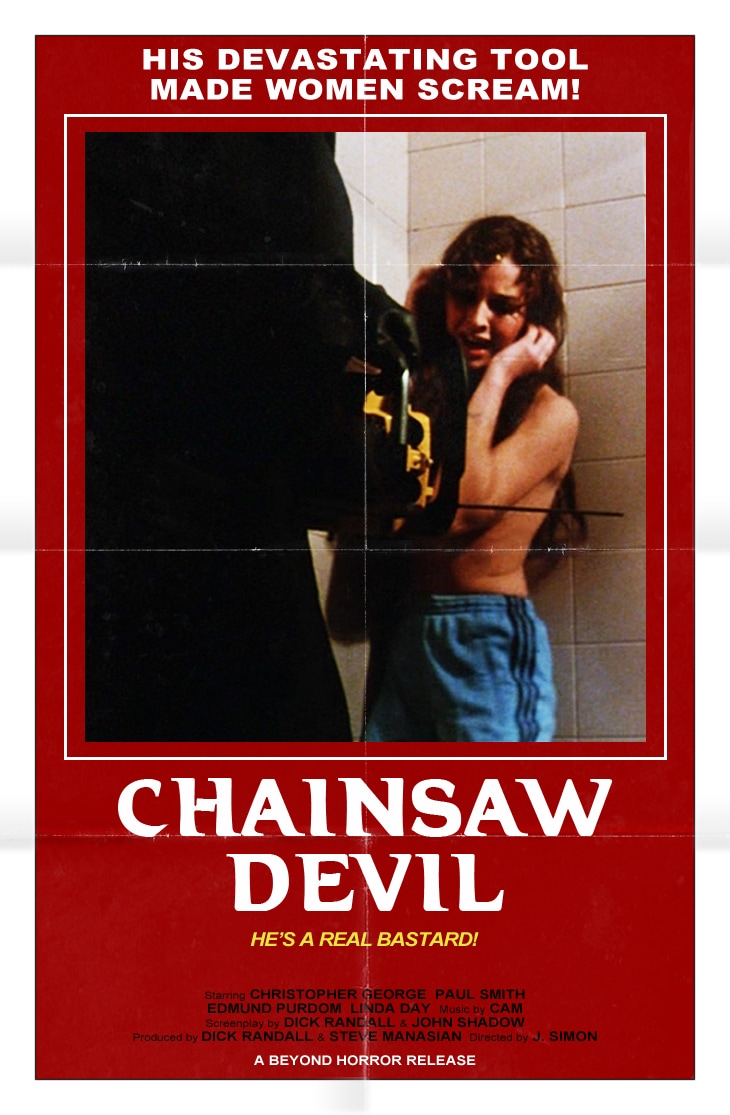After a prologue which shows a young boy butchering his mother after she finds him playing with a pornographic jigsaw, we skip ahead forty years, to a university in Boston. The grown-up boy's latent psychosis is triggered by witnessing a skateboarder crash through a large mirror, which mirrors, if you'll excuse the overuse of the word 'mirror', a memory from just before his mother's death, in which she smashed a mirror in anger. It turns out that the psychosis mightn't have all that latent, as the killer has already brought both the pornographic jigsaw and a box containing his mother's old shoes and bloody dress to Boston with him. As he gradually pieces the jigsaw together, he also tries to rebuild his broken mother, using the student body as a well from which he can draw the various parts.
As a giallo, the film is a bit of a disaster (more of that later), but the reason Pieces endures is because it's really, really weird. It's really, really bad too, of course, but there are plenty of boring bad films which have faded from memory. There are so many absurd moments that I won't be able to list them all here, but to note a few: the kung fu teacher who attacks a female undercover officer, faints, and then jumps up again, blaming his behaviour on bad chop suey; said undercover officer being a tennis champion who's moonlighting as a policewoman moonlighting as a tennis teacher; the bizarro dialogue ("The coffee is fine; I love the cream." "Yes. Well, this is New England, of course."; 'Bastard, BASTARD, BASTARD!") and over-the-top performances (everyone except Jack Taylor-whose stoicism is so prevalent that it crosses into overacting of a kind-and Christopher George, who looks like he's having fun while simultaneously hoping that no-one ever sees the finished product). There are many, many odd and unusual details, though; eccentricity runs through the film's blood and splashes all over the screen. Also like the film's blood.
In terms of the investigation into the murders, we get no real detective work before a climactic breakthrough that's so pedestrian that, again, it's bizarre. After sending in the aforementioned undercover tennis player-cum-policewoman, who is so useless that she essentially takes on a male student as a protector/companion, Christopher George's detective seems content to wait in the shadows, emerging only to make sarky comments and cast aspersions after yet another body is found. He decides upon the innocence of one of the students, Kendall, based on no evidence at all (indeed, Kendall should be one of the leading suspects for the second murder), and practically anoints him as a second-in-command (indeed, Kendall is the student to who Lynda Day's policewoman turns for protection). George makes comments about how he's happy to use the entire police budget to catch the killer, yet the breakthrough comes thanks to Kendall (again), who is part of a crack team of two who are assigned to trawl through police records seeking any mention of the faculty staff (one of the most perfunctory and throwaway case-crackings ever). Maybe the rest of the police force, and budget, had their hands full keeping any knowledge of the murders of four students and one reporter reaching the outside world.
The mystery aspect is largely a dud, too, and if you haven't guessed the killer well before the finale you're a fucking idiot. A large part of the problem is the opening sequence-it's extremely blunt and to-the-point, with no ambiguity whatsoever. Compare it to the opening of Deep Red, which portrays similar events in a far more ambiguous, artful and interesting manner. Interesting might be the wrong word to use here, as the opening to Pieces is typically entertaining and watchable, but it immediately backs the mystery into a corner from which it can't escape. We know straight away that the killer is a male, in his mid-to-late forties, which leaves us with, at best, four suspects, and eliminates the entire student body as suspects (for the audience, if not the police within the film [although Christopher George is extremely quick to do just that]).
Of the four pieces which comprise the puzzle of the murderer's identity, one is George himself, which would probably have been a twist too imaginative for the four heads which came up with the screenplay; one is the gardener, played by Paul L Smith channelling Robin Williams' then-recent portrayal of Popeye, and acting so suspiciously that he couldn't possibly be guilty; one is Jack Taylor's repressed homosexual professor, who the Dean tells us early on lives with his mother, which would appear to rule him out (although it could be an adopted mother, to be fair). The final suspect is Edmund Purdom's Dean, who is keen to keep hoardes of policemen off the campus, but nonetheless wants to provide as much assistance to the investigation as he reasonably can. I'll leave it to you to work out which one is guilty. If you're struggling, the third victim talks to the killer in one of those POV one-sided conversations which only happen in films, recognising him and calling him 'Sir', which helpfully rules out half of the suspects in one fell swoop.
|
|
But you won't be watching Pieces for its merits as a giallo. Like the oversized black rubber gloves worn by the killer, it doesn't quite fit neatly into the genre, being probably intended to cash in on the slasher movie craze. And, also like the gloves, it's cheap and cheerful, it's black (as in darkly funny; stay with me here) and once it grabs you, there's no escape. And I haven't even touched on its last five minutes, which are certifiably insane. Just like Sir.
*And Simon turned out to be cut from the same cloth as Claudio Fragasso, claiming alternately that the film was meant to be funny and ahead if its time. |

 RSS Feed
RSS Feed
